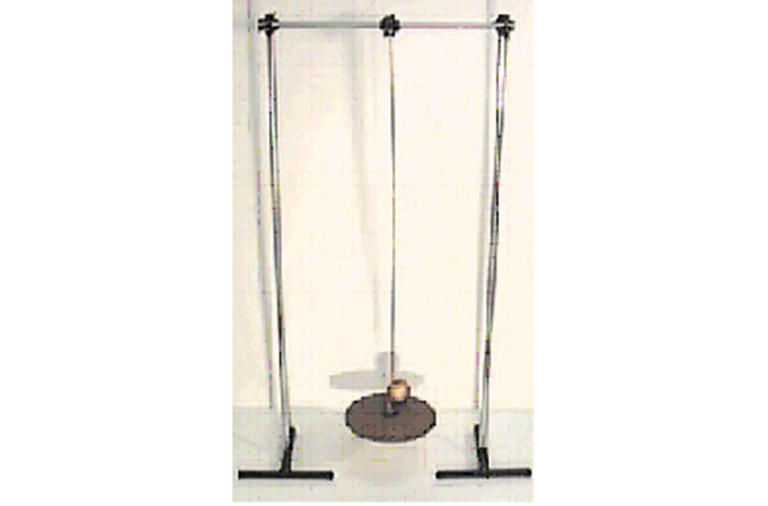Simple Harmonic Motion
P.1(1) – Simple Harmonic Oscillator
A tall stand has a mass hanging from a spring that is free to move up and down demonstrating simple harmonic motion. There are springs of very different stiffness and sizes and balls of different weights and sizes available in the lab.
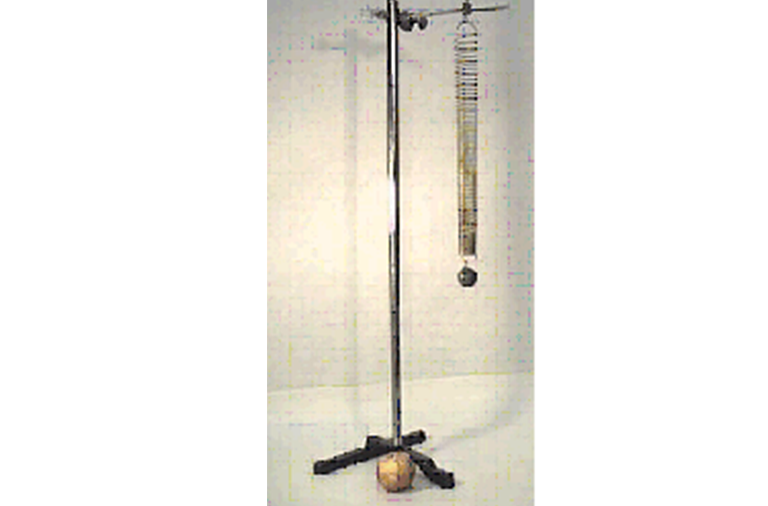
P.1(2) – Simple Pendulum
A mass is suspended by a light non-extensible cord. Balls with different weights are available. A decrease in the length of the cord shortens the period. This can be shown on a tall stand with a support on the horizontal, holding three pendulums of different lengths.
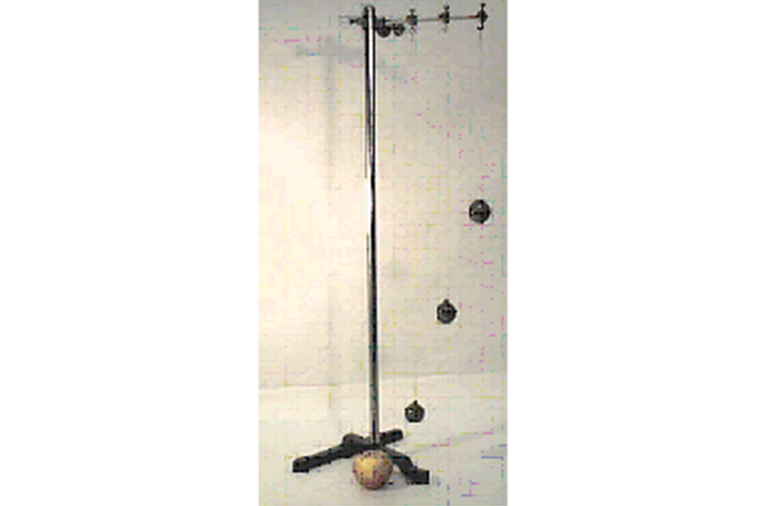
P.1(3) – Relationship between SHM and Uniform Circular Motion
A motor runs a shaft with a ball at the end performing a circular motion at constant speed (the speed can be adjusted). By its side, a stand is set with a spring and a mass. Illuminated from behind an with their images projected on the the screen, the relationship between the ball in uniform circular motion and the oscillating mass is clearly seen.
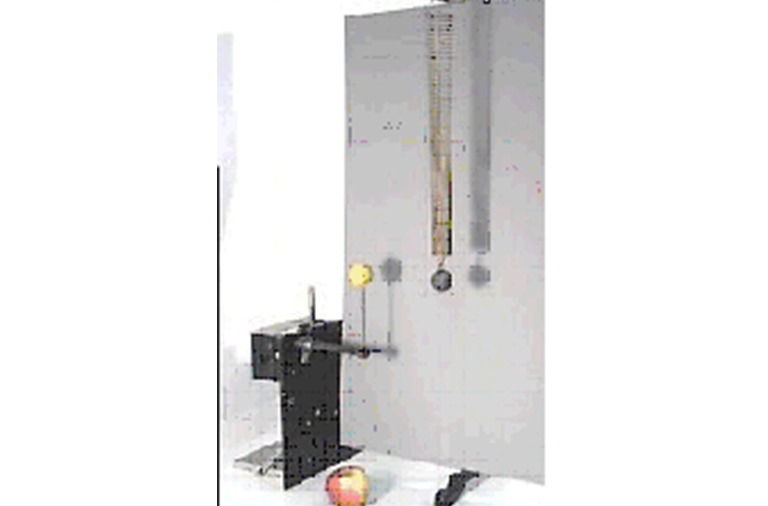
P.1(4) – Compound Pendulum
The apparatus consists of a steel bar about 1 meter long with two heavy cylindrical masses that can be attached in any of the series of holes distributed along its length to provide several axes of suspension, as in the figure. There are several points of suspension for which the pendulum has the same period. All these forms of the physical or compound pendulum will have the same period as a simple pendulum of a length of 66.7 cm, which may be used for comparison.

P.1(5) – Wilbur Pendulum
A pendulum bob with two orthogonal axis hangs from a spring. The apparatus can be set into motion in either the torsional or linear mode. The initial mode will give way completely to the alternate mode. It demonstrates the complete exchange of energy between the two kinds of harmonic motion. It stands in a 40 cm high support and the little barrel is about 2 cm tall.
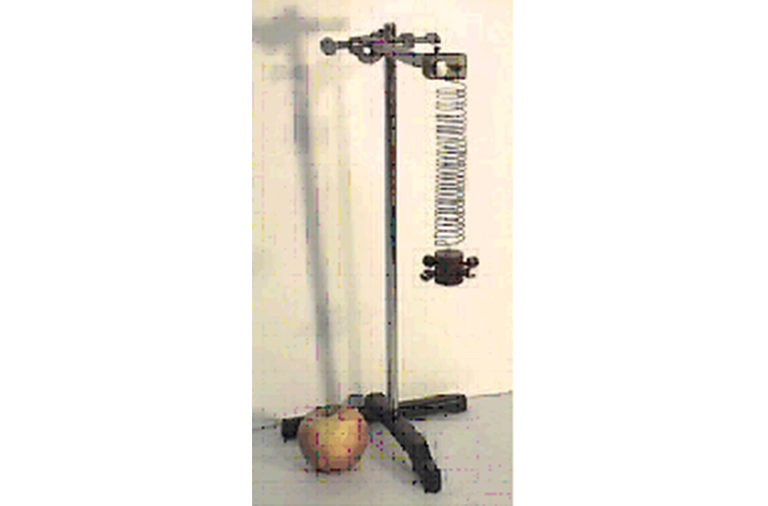
P.1(6) – Torsion Pendulum
It is a 23 cm diameter aluminum disk suspended through its central axis by a steel cable 1.2mlong. The two lines drawn on the disk, as orthogonal axis, make it easier to see the torsional movement.
